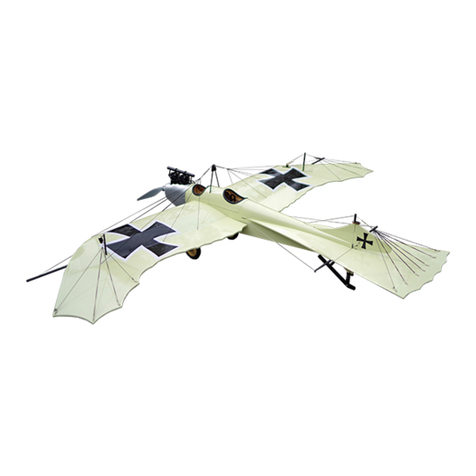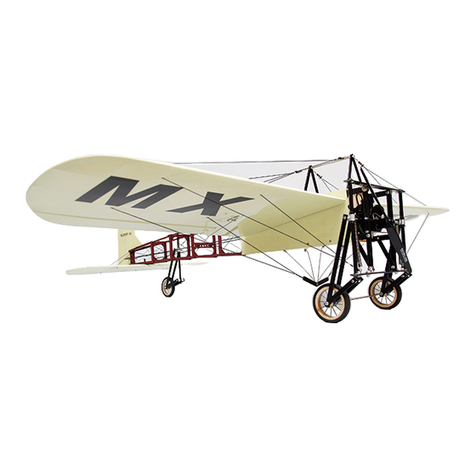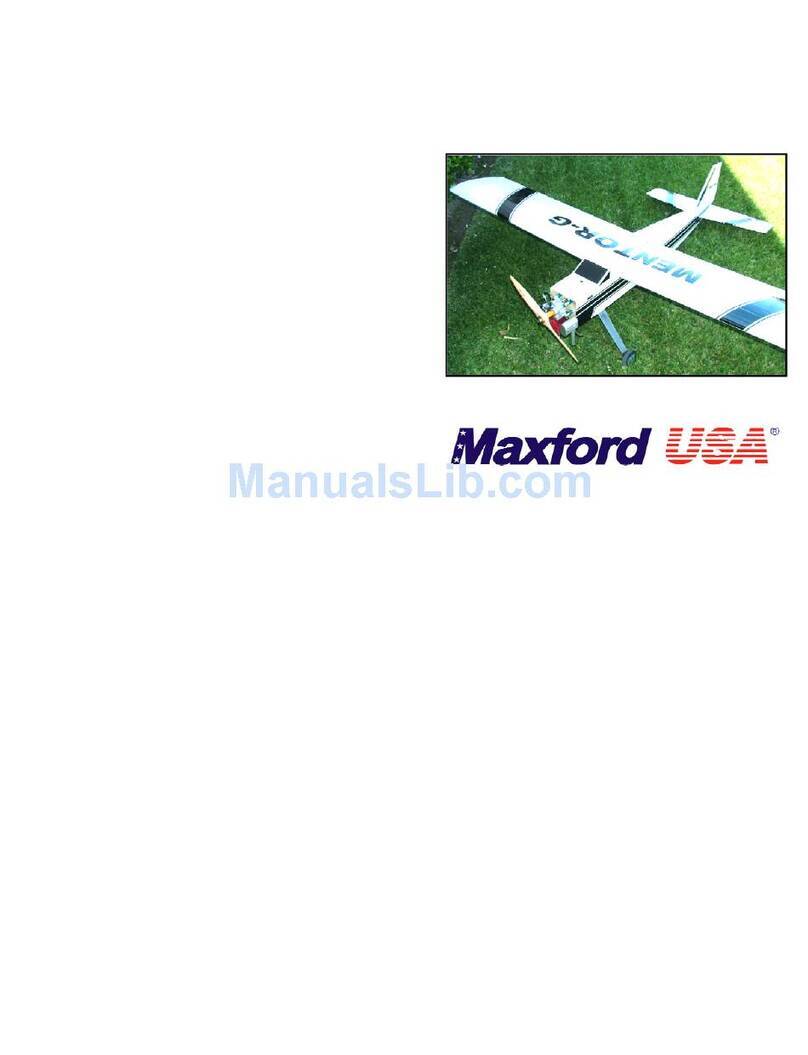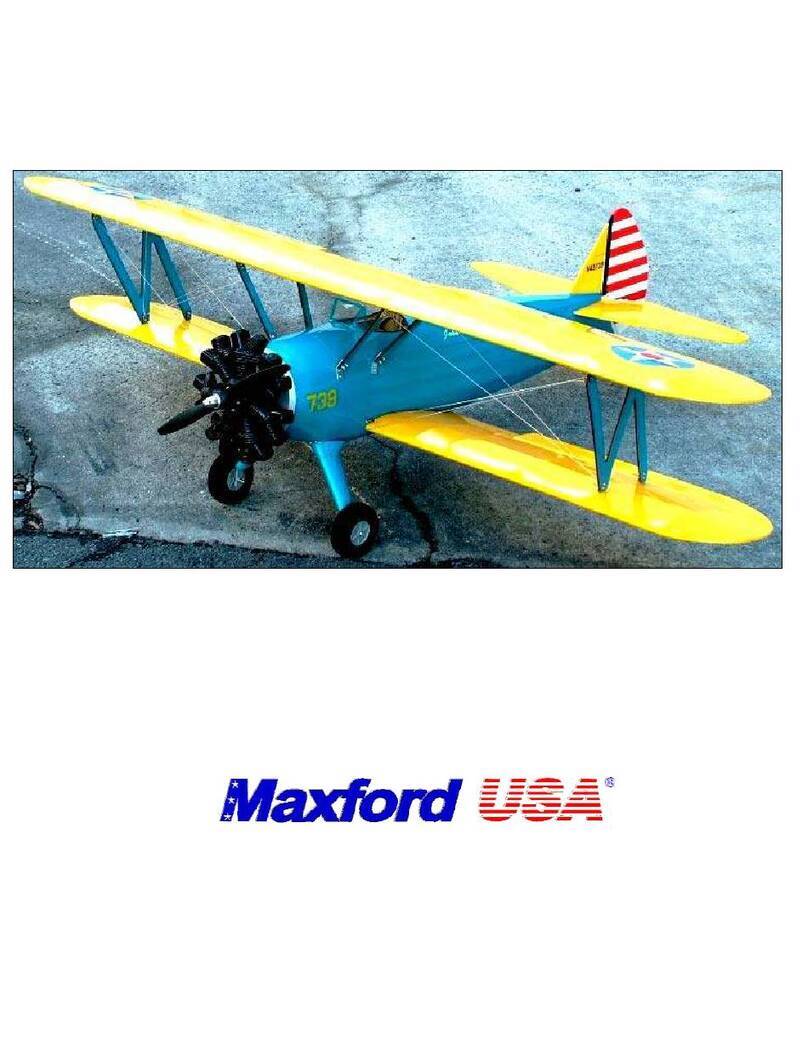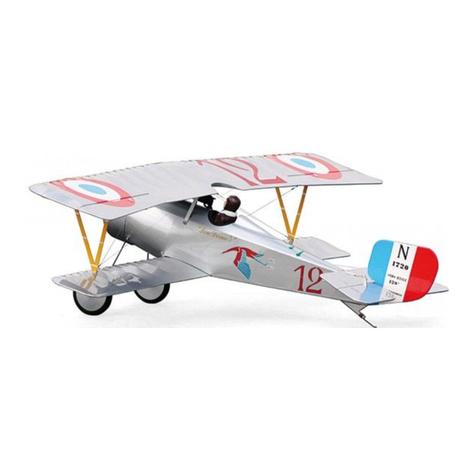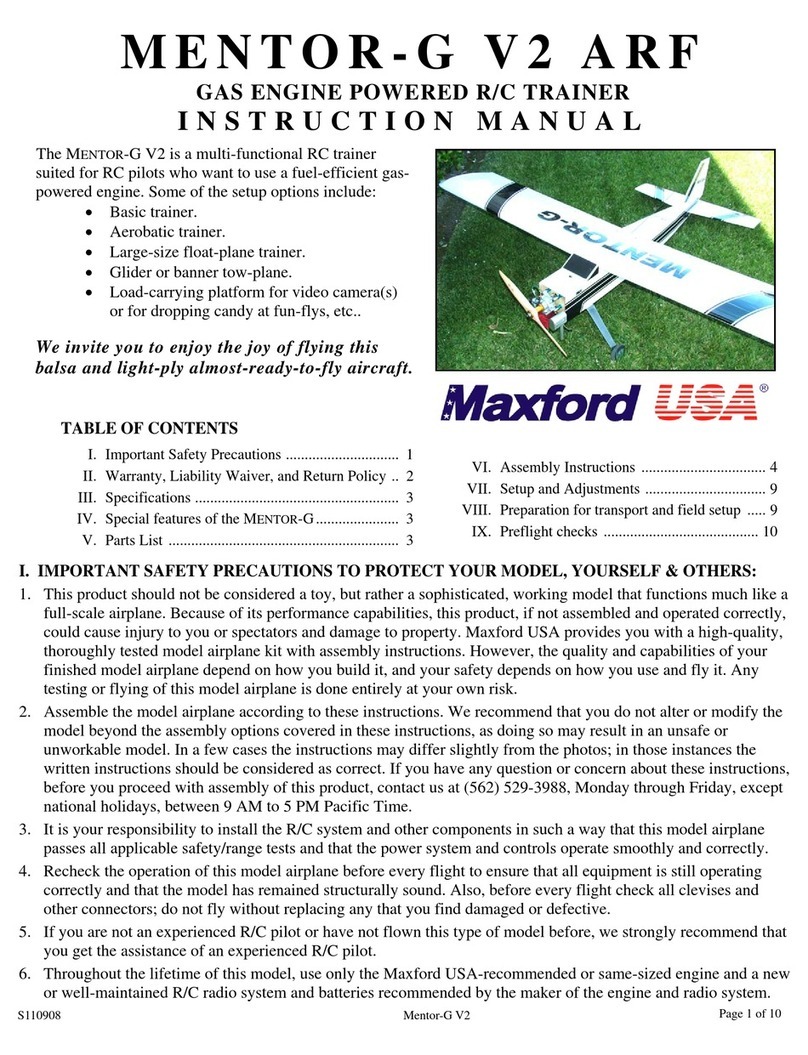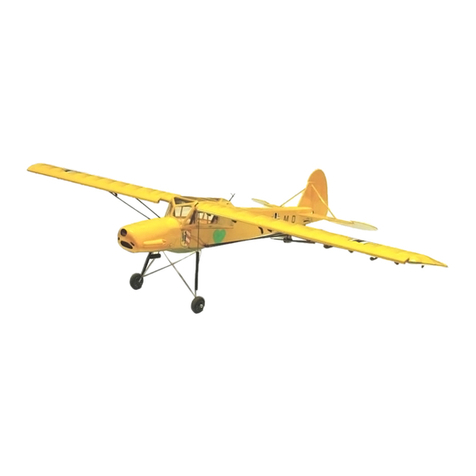
Copyright 2015 Maxford USA Page 3 of 22 pages #S150422
10. We recommend using your radio or a servo tester to center your servos before installation. (You
may learn more about servo testers at http://www.maxfordusa.com/servo.aspx.)
11. String may be supplied to pull your servo’s lead and
servo extension through the wing to your radio receiver;
however, you may find it easier to use masking tape to
temporarily attach the connector to the end of a length of
coat hanger wire, then use the wire to pull the lead and
connector through the airframe as shown at the right.
12. After you have determined each wood-screw’s location, apply thin CA adhesive to harden and
strengthen the wood where the screws are to be inserted.
13. If Mylar hides a CA hinge’s slot, find and open the slot by carefully pressing with a fingernail or
sharp hobby knife.
14. If you are not an experienced ARF assembler or R/C pilot or if you have not flown this type of
model before, we strongly urge you to get assistance from an experienced R/C pilot.
15. You may use epoxy to attach critical parts permanently (such as where the front and rear booms
attach to the upper and lower wing’s center sections and where the horizontal stabilizer attaches
to the tail booms). Apply a threadlock compound to secure all airframe hardware from vibration.
16. If you have concern about the security of any factory fabrication procedure(s), you may apply
extra 5 minute epoxy around the perimeter of such part(s) as a safety precaution.
17. After adjusting each clevis, secure the clevis to its threaded rod
with threadlock compound, epoxy, or CA adhesive.
For additional safety, you may hold the clevis closed by adding a
small piece of tubing (not supplied) as shown at the right.
(NOTE: This model may be packaged with clevises made of either plastic or metal.)
18. Since this model includes some plastic, fiberglass and/or carbon-fiber-reinforced parts, if you drill,
grind or sand any such part, be sure to wear safety goggles, a particle mask and rubber gloves to
guard yourself from eye, skin and respiratory-tract irritation; never blow into the part as the dust
may blow back into your face.
19. Minor production details (such as included hardware items and Mylar or paint colors) may vary.
20. Periodically check the Mylar covering material’s joints and surfaces; if necessary, carefully use an
iron (do NOT set the iron’s temperature too high) to secure the edges and to tighten any loosened
areas.
21. Read all instructions included with your motor, electric speed control, battery and charger. Failure
to follow all instructions could result in permanent damage to these items, their surroundings, and
possible bodily harm! If you crash this model airplane, carefully check whether your battery is
damaged. Do NOT attempt to use or recharge a damaged battery.
II. LIMITED WARRANTY, LIABILITY WAIVER & RETURN POLICY
Maxford USA guarantees this kit to be free from defects in material and workmanship at the time
of purchase. All our products have been inspected in our factory and are checked again when
shipped from our warehouse. However, Maxford USA cannot directly control the materials you
may use or your final assembly process. Therefore, Maxford USA cannot in any way guarantee the
performance of your finished model airplane. Furthermore, in purchasing this product, you (the
buyer or user of this product) exempt, waive, and relieve Maxford USA from all current or future
liability for any personal injury, property damage, or wrongful death, and if you (the buyer or user
of this product) are involved in any claim or suit, you will not sue Maxford USA or any of its
representatives.
If you do not fully accept the above liability and waiver, you may request a return-merchandise
authorization number (RMA#) as explained below in item 2. If you think there is a missing,
damaged or unsatisfactory part, please read our after-sales service and return policy:
1. Inspect your order upon delivery for any missing, damaged or unsatisfactory part(s). If you
believe there is a problem, you must call us at 562-529-3988 (Monday through Friday except
holidays, between the hours of 9 AM and 5 PM Pacific time) before you begin assembly and



